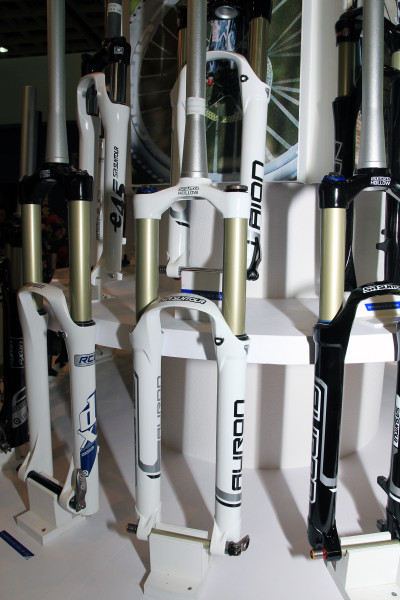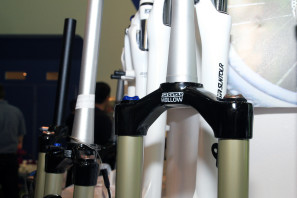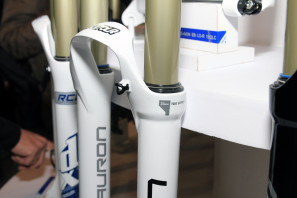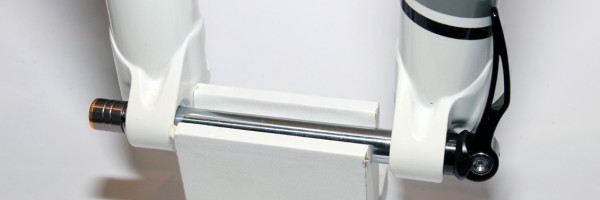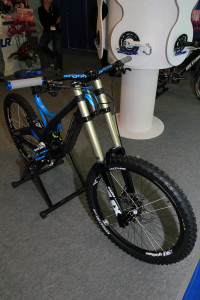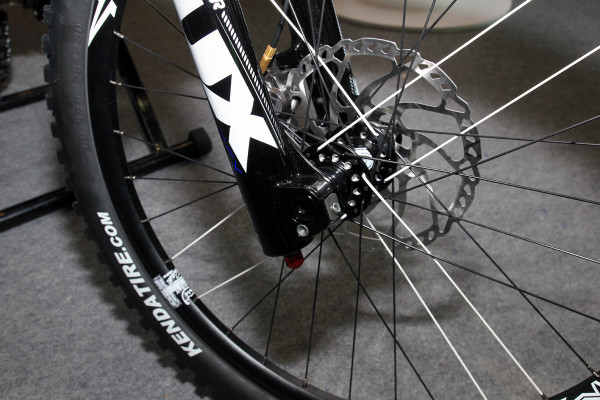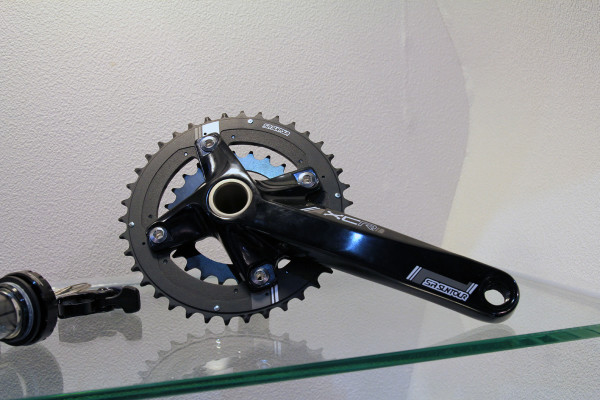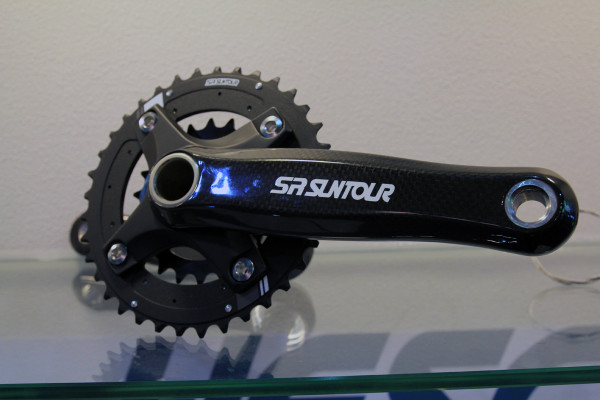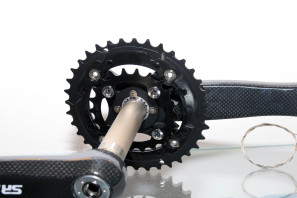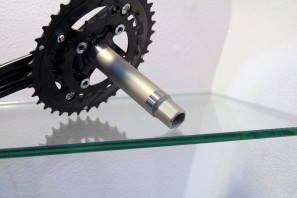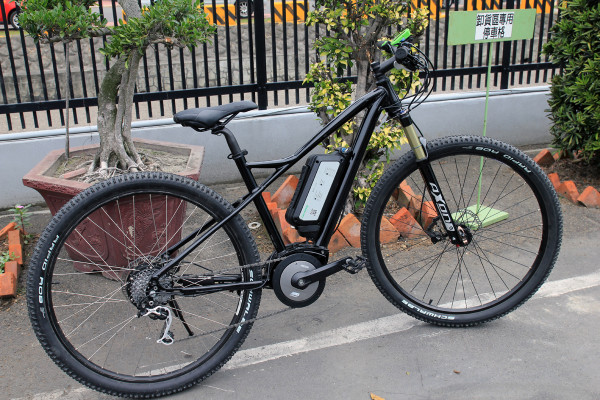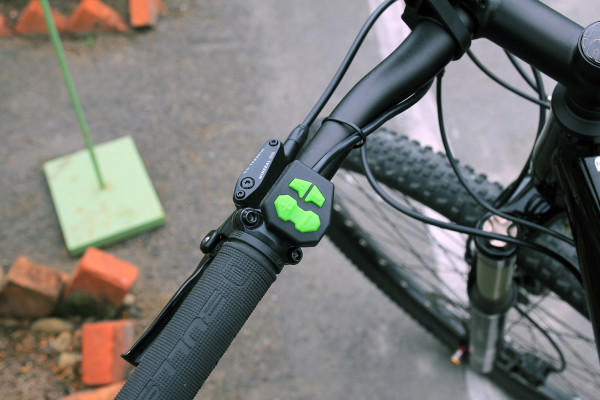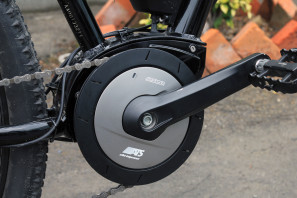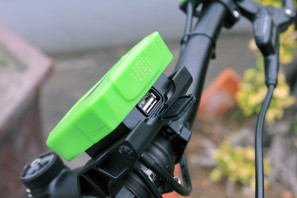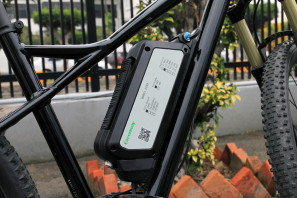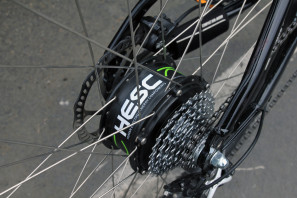While most of the fork news out of SR Suntour at the show came in the form of small improvements to reduce weight, there were a few new forks in the mix as well. All new to the line up is the new Aion, which is more of a budget version of the Auron as it is built with a cast crown instead of the Auron’s hollow crown, and a steel Q-loc instead of aluminum. The Aion will be available in a number of travel and wheel sizes like the Auron, which will now available in a 29er version in addition to the 27.5″ forks offered for its introduction. Billed as an Enduro fork, the Auron received good marks from Saris in testing, which should only get better with new models.
In addition to fork improvements, SR Suntour had some other developments like a prototype carbon crank and and e-bike system…
On the rest of the forks, improvements were like an Easter egg hunt with small touches wherever you looked. Things like the Durolux fork getting a lighter, hollow crown, 15mm Q-locs showing up on a number of additional forks, and the Rux dual crown DH fork gaining a non-quick release axle option. That last one was apparently something consumers had asked for, so going forward there will be a 20mm tool free axle, and 20 mm bolt on axle version available.
SR Suntour produces a lot of cranksets, but in the hopes of getting more into the high end side of the market they are introducing a double version of their XCR mountain crank. The new XCR Double will use an outboard bearing bb system and their hexagon shaped spindle interface. Not quite ready for prime time, but on display was a prototype carbon double crankset with what looked to be a removable spider. After their introduction of a carbon suspension fork, it seems they are exploring other options for what to do with their new found carbon abilities.
Suspension seatposts have never really gone away, especially for cheaper hybrids, but higher end posts seem to be making a comeback. SR Suntour is now offering more colorful versions of their SP12 seatposts so you can match your ride.
Adding to their HESC (Human Electro System Components) line is an all new e-bike system geared towards mountain bikes. While the first HESC system utilized a front wheel drive electric motor and rear wheel drive human power, the mountain bike system uses a pedal assist rear wheel hub motor, with the HESC twin sensor crank which measures torque and rotation to decide when to apply power. The system will be geared towards longer battery life than outright power, which seems to be a different direction than many e-bikes are headed.
The e-system is controlled through a centralized computer and remote that is USB rechargeable. From there you are able to change how much power is delivered to the wheel. The HESC mtb system can be mounted on most frames, as it uses standard component fittings and a bolt on rear hub.
The video outlines the urban, front wheel drive HESC system, but the technology is mostly the same. Skip to about the 1:00 mark to get past the 2wd part.
